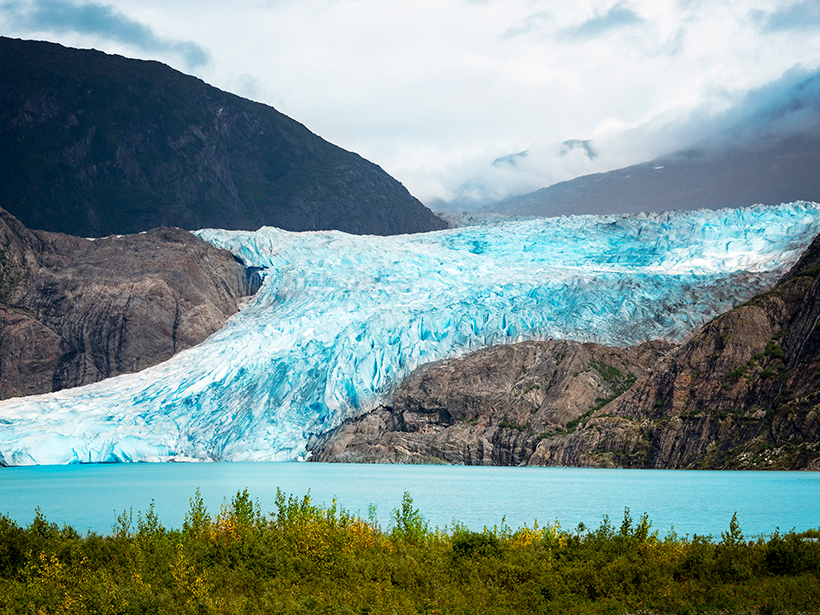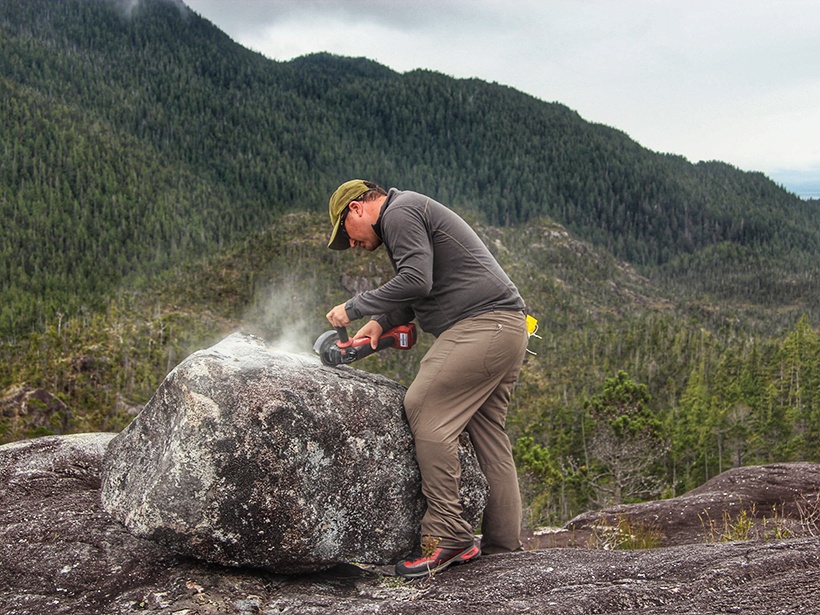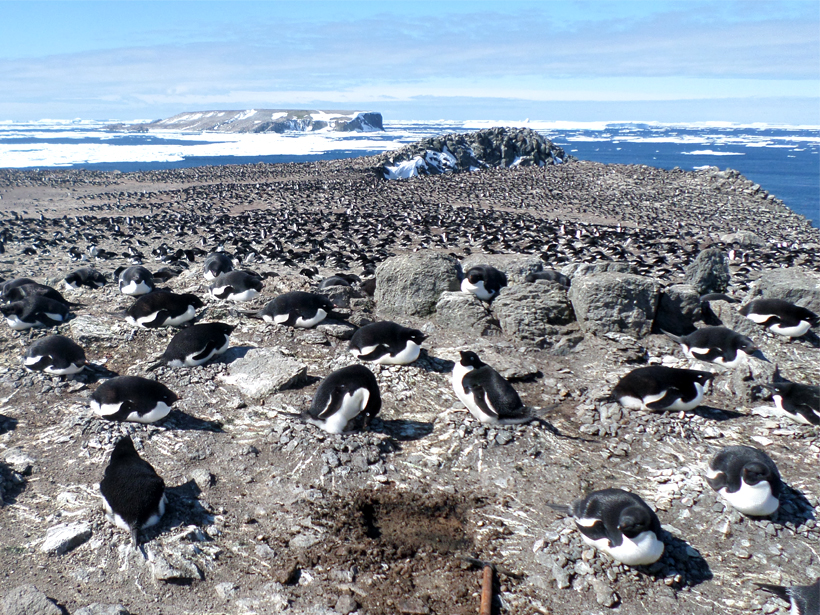The first use of Advanced Scatterometer radar data to determine melt duration on an Antarctic ice shelf shows the season has decreased by up to 2 days per year during the extended 21st century record.
glaciers & ice sheets
Humming Ice Shelf Changes Its Seismic Tune with the Weather
Seismic waves resonating within the upper layers of the Ross ice shelf could help scientists monitor the Antarctic melt season and understand factors that could lead to sudden ice shelf collapse.
Glacial Census Reveals Ice Thicknesses Around the World
Researchers modeled over 200,000 glaciers and found that mountainous regions in Asia contain significantly less glacial ice than previously estimated.
Modern Warming Is Undoing Millennia of Arctic Ice Cover
Plants and rocks at the edges of glaciers have been entombed in ice for more than 40,000 years. Modern warming, unmatched in 115,000 years, is now uncovering these landscapes.
More Evidence Humans Migrated to the Americas via Coastal Route
A new chronology shows that ice-free areas existed along the British Columbia coast earlier than previously thought.
How Will Melting Glaciers Affect Streamflow?
High-resolution modeling of summertime streamflow in the Pacific Northwest reveals the effects of glacial retreat on streamflow will vary by elevation.
Icebergs Reveal Contours of the Ocean Bottom
Using satellite imagery of grounded icebergs near Greenland, researchers estimate the drafts of these ice masses and therefore water depth, measurements that shed light on future sea level rise.
Watch Tiny Cracks Travel in 3-D
Scientists used a transparent gel and high-speed photography to figure out how cracks form and spread. What they found could help explain earthquakes and fracturing glaciers.
How Monsoons in Africa Drove Glacier Growth in Europe
A new study shows that low-latitude weather can affect distant glaciers.
Penguin Poop Keeps a Record of Antarctic Glaciation
Scientists are digging up Adélie penguin guano to study millennia of Antarctica’s history.










